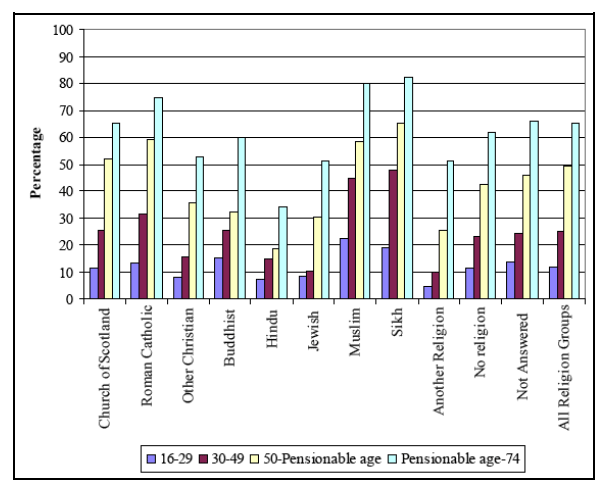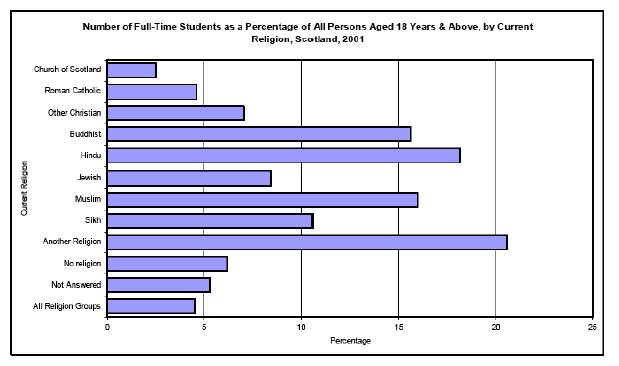Scottish Government Equality Outcomes: Religion and Belief Evidence Review
This evidence review was prepared to support the production of the Scottish Government's Equality Outcomes, with regard to religion.
3 EDUCATION
3.1 This section summarises the information available on education in Scotland, in relation to people identifying with particular religious groups.
3.2 The reader should note that the Scottish Pupil Census does not collect information on religion[4]. The Scottish Further and Higher Education Funding Council's Single Equality Scheme sets out how it will meet its statutory duties (under the Equality Act 2010) to eliminate discrimination and to promote equality between people of different characteristics, including religion[5]. However, its current monitoring reports - for 2010[6][7] - do not include religion. Similarly, the equality report of the Equality Challenge Unit[8] does not address religion.
3.3 The data in this section are therefore taken from the Scottish Census 2001, and show that there are differences in both those with no qualifications, and participation in post-school education, by religion.
3.4 Figure 1 shows that Muslims and Sikhs are among those most likely to have no qualifications[9]. The proportions of those without qualifications varies markedly when looking at different age groups - with those of pensionable age much less likely to have any qualifications than those aged 16-29.

Figure 1: Adults with no qualifications (or qualifications not listed in the 2001 Census) by current Religion - All People aged 16-74 years. (Source: Analysis of religion in the 2001 census, 2005)
3.5 In the Census data on participation in post-compulsory education (see Figure 2)[10], there are again variations by religion. Muslims, Sikhs and Hindus more likely than people from other religions to participate in post-compulsory education.

Figure 2: Participation in post-compulsory education (Source: 2001 Census)
3.6 A report on diversity in the further education workforce[11] found virtually no research on staff experiences in relation to religion. The case studies of colleges in this report found that staff thought religion had been catered for effectively in institutions' equal opportunities policies, by means of allowances being made for the needs of specific individuals. However, the report's authors warn that this view may reflect a lack of knowledge and awareness of the issues encountered by the respondents.
Contact
Email: Social Research
There is a problem
Thanks for your feedback